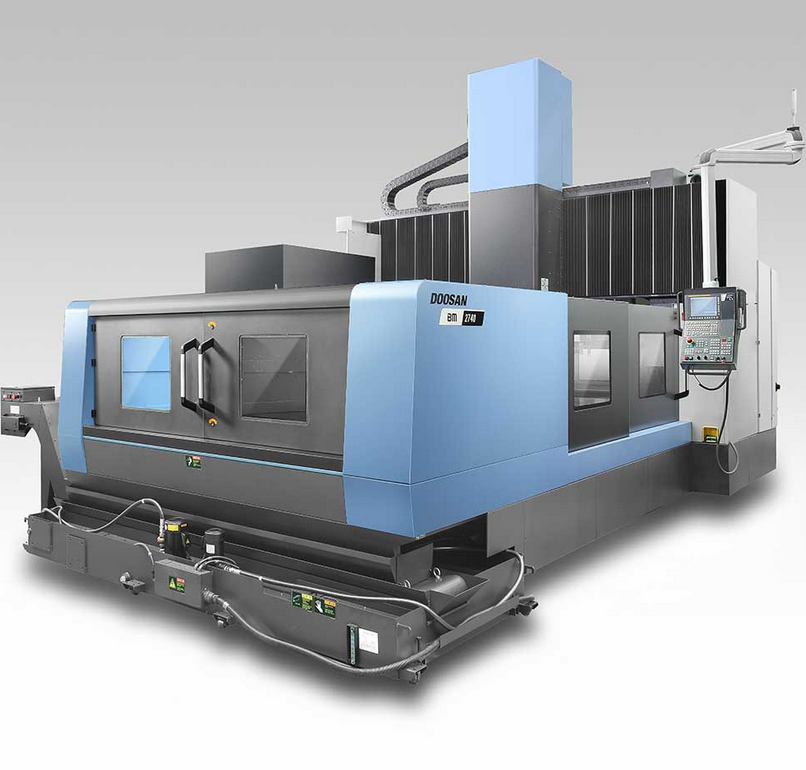Machining centers play a pivotal role in modern manufacturing processes, providing high levels of accuracy and productivity. Two popular types in this domain are the Bridge Machining Center and the Gantry Machining Center. Both offer distinct advantages depending on the nature of the workpiece and the precision required. In this article, we will delve deep into the specifics of these two machines, covering their features, applications, and key differences.
- Introduction to Machining Centers
Machining centers are computer-controlled machines designed to perform various operations such as milling, drilling, tapping, and boring on a wide range of materials, especially metals. They are a cornerstone in industries like aerospace, automotive, and heavy machinery. These machines come in various designs, among which the Bridge and Gantry Machining Center stand out for their ability to handle large workpieces with high precision.
- What is a Bridge Machining Center?
A Bridge Machining Center is a type of vertical machining center where the spindle moves in three axes relative to the workpiece. The defining characteristic is its fixed table and moving bridge. This design provides stability and precision when machining large components. The bridge itself holds the tool head, which moves along the X, Y, and Z axes to perform the cutting process.
Key Features of Bridge Machining Centers:
- High Precision: The rigid structure of the bridge allows for high-precision machining, making it ideal for producing complex parts.
- Fixed Table: With a fixed workpiece, the machine can handle larger components without compromising accuracy.
- Multi-axis Machining: Bridge machining centers are often equipped with 3, 4, or even 5-axis machining capabilities, allowing for complex geometry to be machined in one setup.
- Application Versatility: These centers are used in industries like aerospace and automotive, where large parts need to be machined to tight tolerances.
Applications of Bridge Machining Centers:
- Aerospace Components: Large airframe components require precision, which is where bridge machining centers shine.
- Automotive Parts: Engine blocks and other sizable components are often machined using bridge centers.
- Tool & Die Manufacturing: The precision required in mold and die making is another area where these machines are commonly employed.
- What is a Gantry Machining Center?
The Gantry Machining Center shares similarities with the bridge design but with a key difference: it has a moving table. The gantry, or overhead structure, is fixed, while the workpiece moves beneath the tool head, which can also move along the three axes. This configuration is advantageous for extremely large workpieces that require long travel distances for the tool.
Key Features of Gantry Machining Centers:
- Massive Work Area: Gantry centers are capable of handling very large parts, making them ideal for industries like shipbuilding and construction.
- Dynamic Operation: The moving table and fixed gantry allow for high-speed machining, making these machines suitable for both large and detailed parts.
- 5-Axis Capabilities: Many gantry centers are equipped with 5-axis heads, allowing for complex shapes to be machined in one go.
- Heavy-duty Machining: Due to their size and design, gantry machining centers can handle large volumes of material removal with high efficiency.
Applications of Gantry Machining Centers:
- Shipbuilding: Large components like hull sections are commonly machined using gantry centers.
- Construction Equipment: Gantry centers are used for machining parts of cranes, bulldozers, and other heavy machinery.
- Energy Sector: Turbine components, wind energy parts, and other large, intricate parts are machined using gantry systems.
- Key Differences Between Bridge and Gantry Machining Centers
While both bridge and gantry machining centers serve similar purposes, they are designed for different kinds of tasks and workpieces. Here are the primary distinctions:

Design and Structure:
- Bridge Machining Center: Features a fixed table with a moving bridge. The workpiece remains stationary while the tool head moves.
- Gantry Machining Center: The gantry remains fixed, and the workpiece moves on a table beneath the gantry.
Workpiece Size and Capacity:
- Bridge Machining Center: Suitable for moderately large workpieces, with the bridge providing stability and precision.
- Gantry Machining Center: Ideal for extremely large workpieces, as the moving table allows for long travel distances.
Precision and Speed:
- Bridge Machining Center: Offers high precision, especially for detailed, intricate parts. Typically used in aerospace and automotive industries.
- Gantry Machining Center: Capable of high-speed, heavy-duty machining, making it suitable for industries requiring large material removal, like shipbuilding and construction.
Cost:
- Bridge Machining Center: Generally more affordable than gantry machining centers due to their smaller size and simpler design.
- Gantry Machining Center: These tend to be more expensive, given their size, complexity, and the capacity to handle massive workpieces.
- Choosing Between a Bridge and Gantry Machining Center
When deciding between a bridge or gantry machining center, several factors need to be considered:
- Workpiece Size: If you are machining exceptionally large components, the gantry center is the best option. However, for moderately large parts that require precision, a bridge center would suffice.
- Material Removal Volume: For heavy-duty machining, where large amounts of material need to be removed, the gantry system offers a higher level of efficiency.
- Precision Requirements: For intricate and highly precise parts, the rigidity and design of a bridge center offer better performance.
- Space and Budget: Gantry centers require more space and a higher budget, while bridge centers are more compact and cost-effective.
- Future Trends in Machining Centers
As industries evolve, so do the technologies involved in machining. Both bridge and gantry machining centers are seeing innovations aimed at increasing their efficiency, precision, and versatility. Some trends include:
- Automation: The integration of robotics for tool changes, part loading, and unloading is becoming more prevalent.
- Smart Machining: IoT-enabled machining centers that monitor performance and predict maintenance requirements.
- Advanced Materials: Both bridge and gantry centers are being adapted to handle advanced materials like composites and titanium.
- Conclusion
Both Bridge Machining Centers and Gantry Machining Centers offer unique advantages, depending on the type of workpiece and machining requirements. Bridge centers provide high precision and are ideal for moderately large parts, while gantry centers excel in handling massive workpieces with heavy-duty machining capabilities. By understanding their features and applications, manufacturers can select the right machine to enhance their production capabilities.



